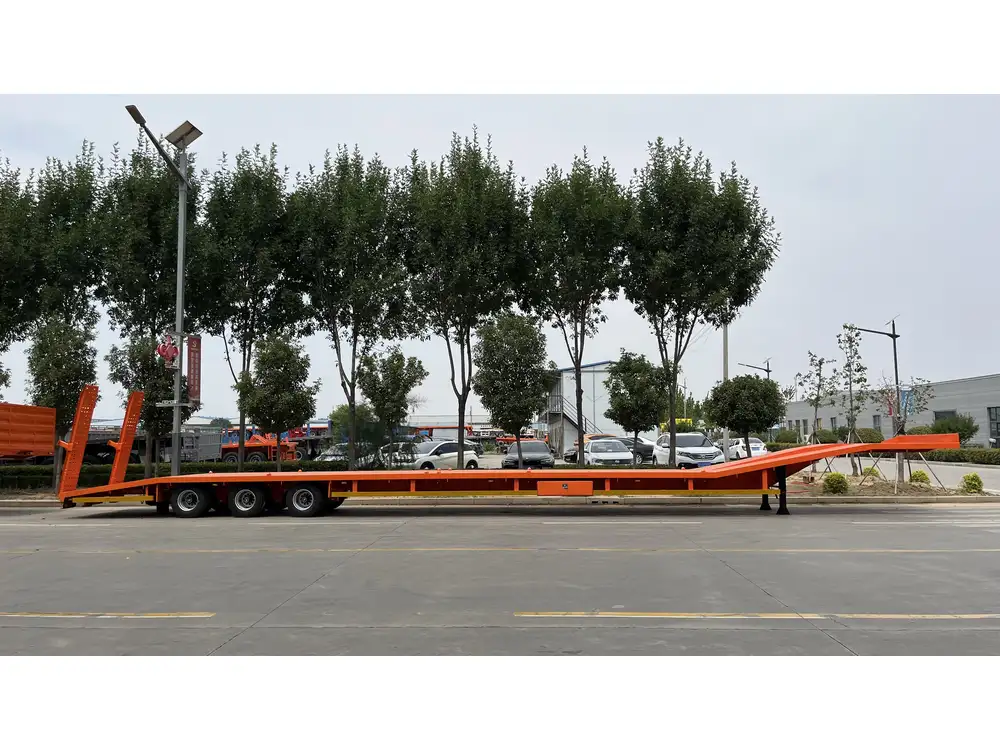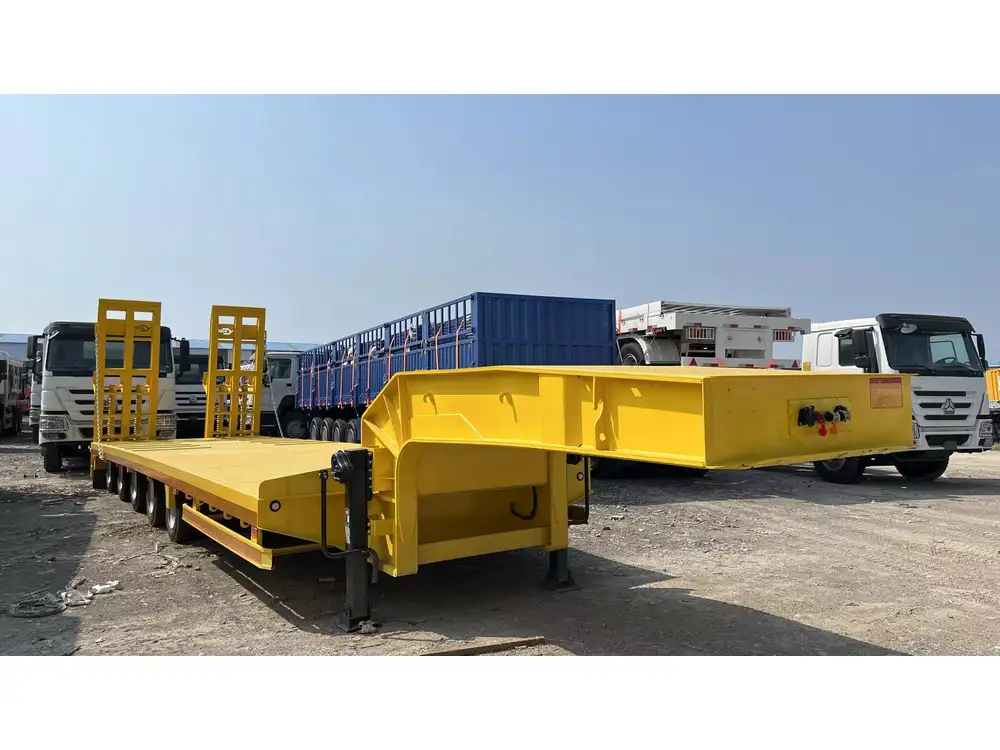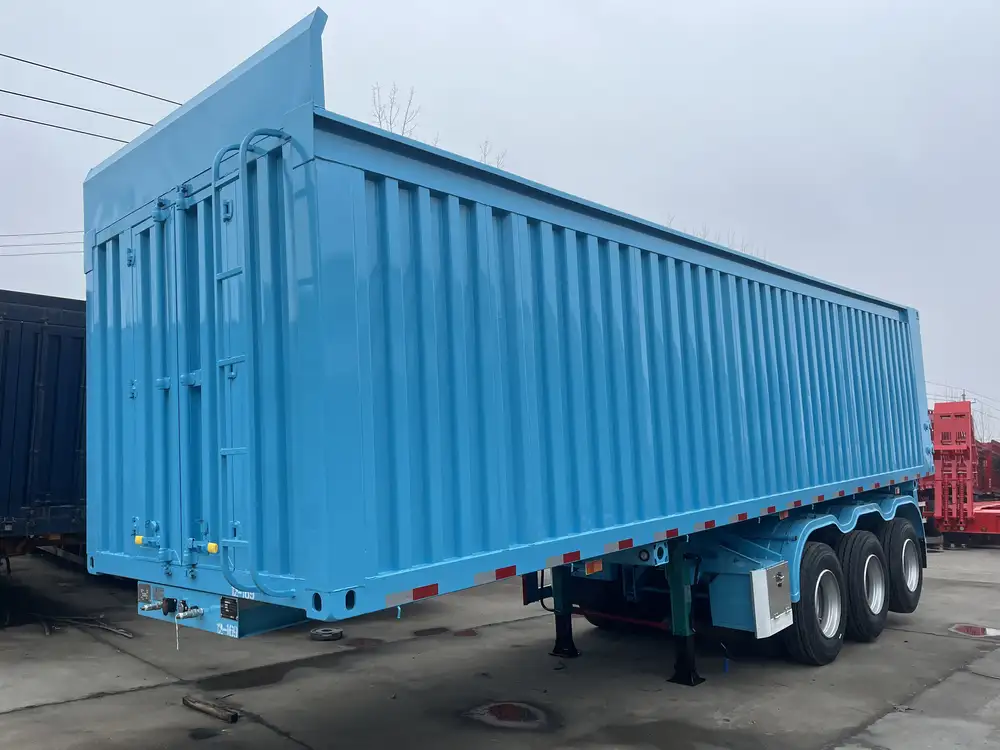Dump trailers are indispensable tools in various industries, particularly in construction, landscaping, and agriculture. The ability to transport heavy loads efficiently is one of their most significant advantages. However, understanding how many tons a dump trailer can hold is crucial for optimizing its use. This article delves deep into the factors affecting load capacity and provides insights into calculating the maximum weight a dump trailer can safely carry.
What Is a Dump Trailer?
A dump trailer is a specialized vehicle designed to transport loose materials. Unlike standard trailers, which often feature a flatbed, dump trailers have a hydraulic system that allows the bed to lift, facilitating unloading. This design makes them particularly effective for moving materials like dirt, gravel, sand, and construction debris.
Key Components of a Dump Trailer
To comprehend its load capacity, it’s essential to understand the components that contribute to a dump trailer’s functionality:
| Component | Function |
|---|---|
| Frame | Provides structural support and stability |
| Axles | Carry the load and allow the trailer to move |
| Hydraulic System | Enables the trailer bed to elevate for easy unloading |
| Bed Material | Influences weight tolerance; commonly made from steel or aluminum |
| Tires | Necessary for maneuverability and load support |

Factors Affecting Dump Trailer Capacity
1. Trailer Size
The dimensions of a dump trailer directly correlate with its load capacity. Common sizes range from 5 to 20 cubic yards, with available options in both single-axle and dual-axle designs.
| Trailer Size (Cubic Yards) | Approximate Weight Capacity (Tons) |
|---|---|
| 5 | 2.5 |
| 10 | 5 |
| 12 | 6 |
| 14 | 7 |
| 16 | 8 |
| 20 | 10 |
2. Material of the Bed
The material used for the trailer bed can significantly affect its weight capacity. Steel beds are sturdier and can typically handle heavier loads compared to aluminum beds, which are lightweight and corrosion-resistant but may not support the same weight.

3. Axle Configuration
Dump trailers can have single or tandem axles. Tandem axle configurations are generally better suited for heavier loads since they distribute weight more evenly across the trailer.
4. Weight Distribution
It’s crucial to adhere to proper weight distribution guidelines when loading a dump trailer. Overloading one end can lead to instability, increasing the risk of accidents during transport.
Calculating the Capacity of a Dump Trailer
Calculating how many tons a dump trailer holds involves several steps:

Step 1: Know the Trailer Specifications
Refer to the manufacturer’s specifications for the exact load rating of your dump trailer model. This figure is often represented as the Gross Vehicle Weight Rating (GVWR).
Step 2: Consider the Weight of the Trailer
To determine how many tons of material can be loaded, subtract the trailer’s weight (commonly called the tare weight) from the GVWR.
[ \text{Load Capacity (Tons)} = \left(\text{GVWR} – \text{Tare Weight}\right) \div 2000 ]Example Calculation
If a dump trailer has a GVWR of 10,000 lbs and a tare weight of 3,000 lbs:
- Take the GVWR of 10,000 lbs
- Subtract the tare weight of 3,000 lbs
- [ = 10,000 – 3,000 = 7,000 \text{ lbs} ]
- Divide by 2,000 to convert to tons
- [ = \frac{7,000}{2,000} = 3.5 \text{ tons} ]
Thus, this specific dump trailer can carry a load of 3.5 tons.

Types of Materials and Their Weights
Understanding the types of materials you plan to transport is essential when considering how many tons a dump trailer can hold. Various materials have different weights per cubic yard. Here’s a comparison of common materials:
| Material | Weight per Cubic Yard (lbs) | Weight per Cubic Yard (Tons) |
|---|---|---|
| Sand | 2,700 | 1.35 |
| Dirt | 2,000 – 2,800 | 1.0 – 1.4 |
| Gravel | 2,500 – 3,000 | 1.25 – 1.5 |
| Topsoil | 1,500 – 2,000 | 0.75 – 1.0 |
| Concrete | 3,000 | 1.5 |
| Asphalt | 1,950 – 2,200 | 0.975 – 1.1 |
Estimating Volume Needs
Given the weight of materials, it’s feasible to estimate how much of a specific material a dump trailer can carry. For example, if a 10-cubic-yard trailer is utilized for sand, which averages 2,700 lbs per cubic yard, we can calculate the total weight:
[ \text{Total Weight} = \text{Cubic Yards} \times \text{Weight per Cubic Yard} ]- [ 10 \text{ cubic yards} \times 2,700 \text{ lbs/cubic yard} = 27,000 \text{ lbs} ]
- Convert to tons: [ \frac{27,000}{2,000} = 13.5 \text{ tons} ]
So, a 10-cubic-yard dump trailer can transport approximately 13.5 tons of sand.
Compliance and Legal Considerations

1. Weight Limits and Regulations
Each state has regulations regarding the maximum weight a vehicle can carry on public roads. It’s crucial to check local laws to ensure compliance. Exceeding weight limits can lead to hefty fines, equipment damage, and safety hazards.
2. Permitting for Overweight Loads
In some circumstances, if the load exceeds legal limits, you may need a special permit. Always confirm local regulations regarding overweight permits before transportation.
Maintenance Tips for Maximizing Load Capacity
Maintaining your dump trailer can enhance performance and prolong its lifespan, ensuring it can carry maximum loads safely. Here are some tips:
- Regular Inspections: Check tires, brakes, and the hydraulic system frequently to avoid malfunctions.
- Calibrate the Hydraulic System: Ensure that the hydraulic lift is functioning correctly to handle maximum loads.
- Load Evenly: Distribute the load evenly within the trailer to prevent instability during transport.
- Clean After Use: Remove debris and empty the trailer after use to prevent corrosion and damage.

Common Mistakes to Avoid
1. Overloading the Trailer
Exceeding the weight capacity can lead to mechanical failure and dangerous driving conditions. Always heed GVWR recommendations.
2. Poor Weight Distribution
Shifting weights can cause the trailer to sway, making it difficult to control. Ensure an even distribution of materials.

3. Neglecting Maintenance
Regular maintenance checks can prevent costly repairs and extend the life of the trailer. Schedule inspections as part of your operational procedures.
Conclusion
Understanding how many tons a dump trailer can hold is essential for effective and safe operations. By considering trailer specifications, material weights, and regulations, you can optimize your use of dump trailers and improve transportation efficiency.
Whether you’re in construction, landscaping, or any field requiring the use of a dump trailer, applying these insights and calculations will enhance your effectiveness and ensure compliance with relevant standards. For any specific queries regarding your dump trailer’s capacity or related issues, feel free to contact us for expert advice and industry-leading solutions.



